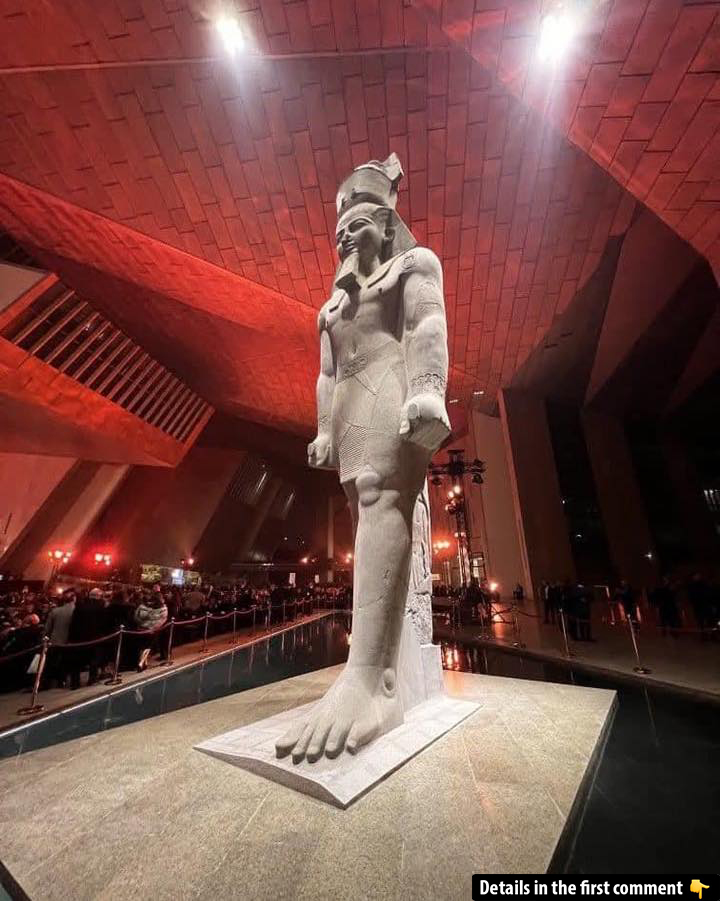The colossal statue of Ramesses II, one of Egypt’s most powerful and celebrated pharaohs, stands as an enduring symbol of ancient Egypt’s grandeur. This monumental sculpture, discovered in 1820 and restored several times over the centuries, offers a fascinating glimpse into the architectural and cultural achievements of the New Kingdom. As one of the largest and most impressive statues of the time, it is not only a testament to the pharaoh’s reign but also a reminder of the historical significance of Egypt’s artistry, religion, and political power.
The Colossal Statue’s Origins and Discovery
The colossal statue of Ramesses II was initially discovered in 1820 by the Italian explorer Giovanni Battista Caviglia, who found it on the southern flank of the Great Temple of Ptah, located in Memphis, the capital of the Old Kingdom of Egypt. The statue was originally situated near the temple, a site dedicated to Ptah, the god of creation and craftsmanship. The massive sculpture, which was carved from limestone, initially stood at an imposing height of approximately 12 meters. However, it is believed that the statue was likely taller when originally constructed, possibly reaching 13 meters.
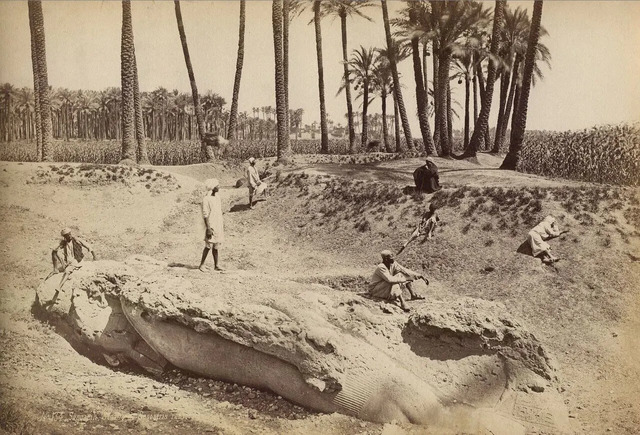
The statue’s discovery was a remarkable moment in archaeology, as it revealed an ancient masterpiece that had been buried for centuries. The statue was later moved in 1954 to Cairo to celebrate Egypt’s revolution and subsequently to Giza in 2006 due to concerns about air pollution. Finally, in 2018, it was relocated to the newly established Grand Egyptian Museum, a fitting home for one of Egypt’s most revered pharaohs.
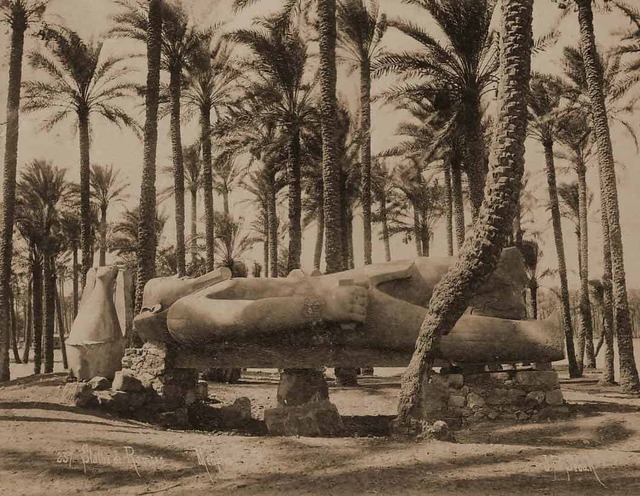
Video
Check out the video on the giant Ramses II statue being moved to the Grand Egyptian Museum – it’s a monumental moment in history!
Monumental Features of the Statue
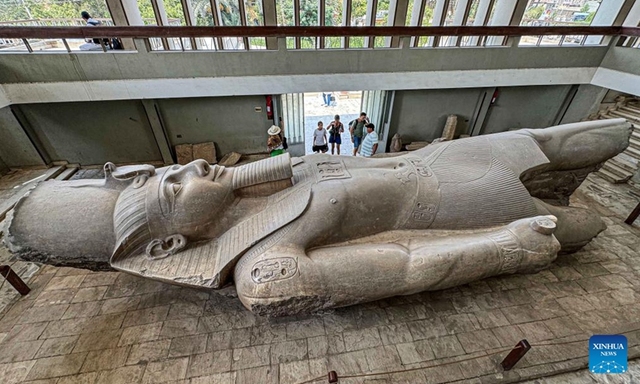
The Ramesses II statue stands as a masterwork of ancient Egyptian artistry. Although the statue was initially massive, its current height is 10 meters due to its broken condition. It weighs over 80 tons and is made from limestone, displaying intricate details. The statue’s face is beautifully sculpted, featuring almond-shaped eyes accentuated with Kohl pigment. The nose is straight, and the lips curve into a subtle smile, conveying both strength and majesty. The pharaoh is depicted wearing the traditional royal headdress, the “Nemes,” symbolizing his authority over both Upper and Lower Egypt.
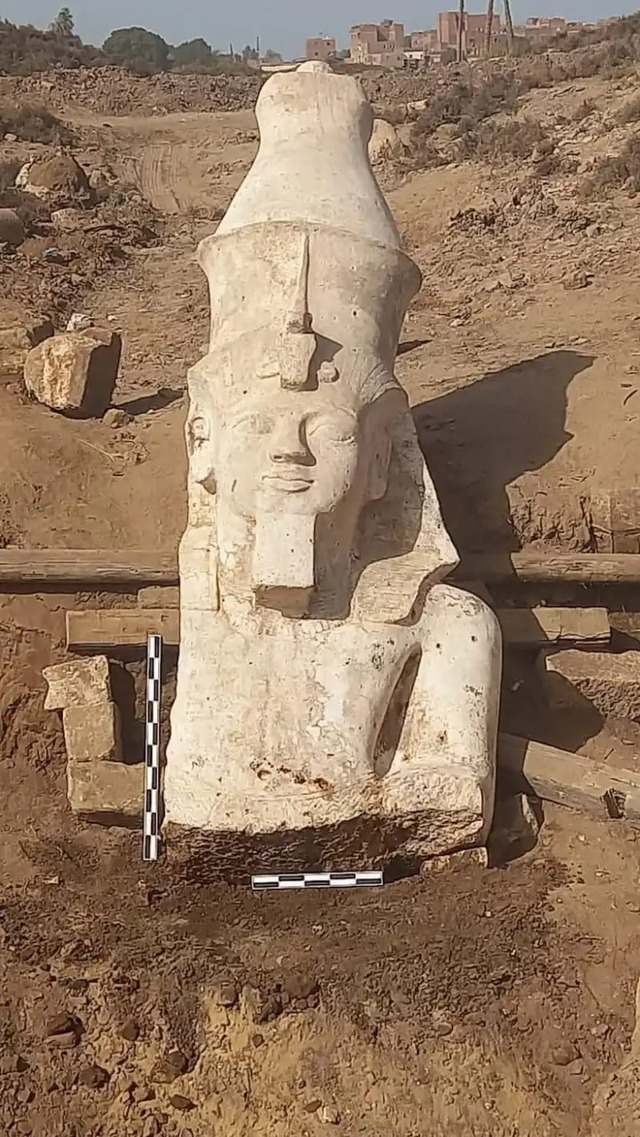
The double crown that adorns the pharaoh’s head is a symbol of his rule over the united lands of Egypt. The cobra and vulture motifs on the crown further symbolize his protection and sovereignty, as the cobra represented the goddess Wadjet, the protector of Lower Egypt, while the vulture was associated with Nekhbet, the goddess of Upper Egypt. Additionally, the statue’s false beard, a traditional symbol of divine power, connects Ramesses II to the god Osiris, the ruler of the afterlife.
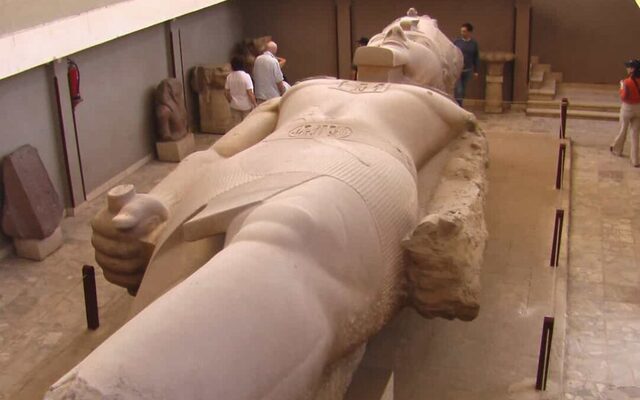
The Statue’s Symbolism and Cultural Importance
In ancient Egypt, the creation of monumental statues like this one was not just an artistic endeavor but a political and religious statement. Ramesses II, known as Ramesses the Great, is remembered for his military prowess, his building projects, and his role in the Egyptian pantheon. The colossal statue, like many others erected during his reign, was intended to showcase his power, divine right to rule, and connection to the gods. By depicting the pharaoh in such a grand form, the statue affirmed Ramesses II’s divine authority and underscored his importance as both a political leader and a spiritual figure.
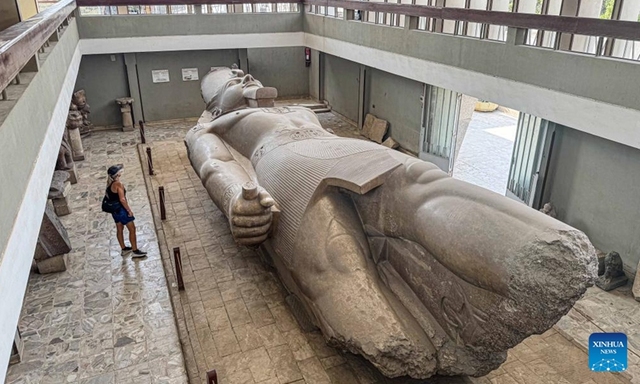
The symbolism of the statue also ties into the Egyptians’ beliefs in the afterlife. The use of gold and the positioning of the pharaoh in a seated or standing posture were designed to reflect his eternal power, allowing him to continue influencing Egypt even after his death. The statue, with its focus on divine iconography, was meant to ensure that Ramesses II’s legacy would live on in perpetuity, just as the great pyramids were built to honor Egypt’s most powerful kings.
The Challenges of Preserving and Moving the Statue
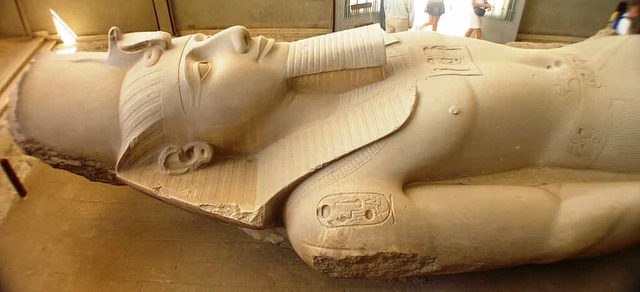
Over the centuries, the colossal statue of Ramesses II has been subjected to the challenges of time, weather, and human interference. After its discovery, the statue was left in a state of disrepair for many years due to difficulties in moving such a massive object. Its relocation from Memphis to Cairo, and later to Giza, required a series of complex engineering feats. The statue was carefully disassembled and transported using a combination of ancient methods and modern technology, ensuring its protection during the journey.
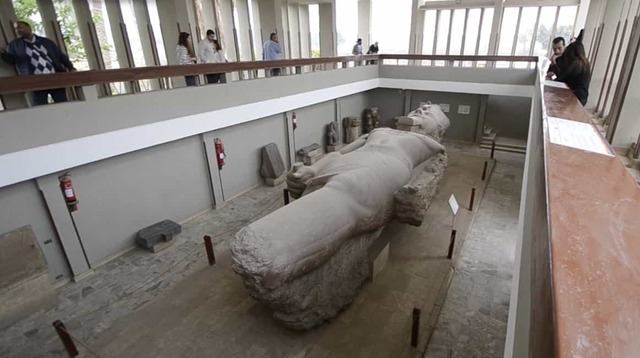
Despite these efforts, the statue still faced risks, including damage from air pollution and the physical toll of its centuries-long exposure to the elements. This is why the Egyptian government decided to move the statue to the Grand Egyptian Museum in 2018, where it would be safely housed in an environment designed to preserve its structural integrity.
Ramesses II’s Influence on Egyptian History
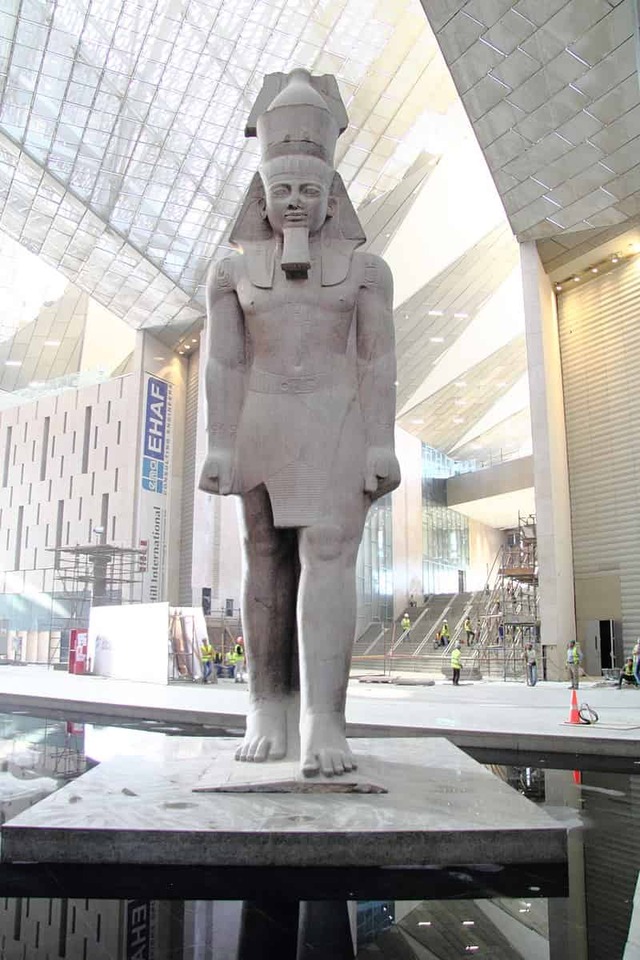
Ramesses II’s reign marked the height of Egypt’s power, wealth, and cultural development. Known for his military victories, including the famous Battle of Kadesh, Ramesses II expanded Egypt’s territory and solidified its dominance over neighboring regions. He was also a great builder, commissioning monumental structures such as the temples at Abu Simbel and the Ramesseum, which showcased Egypt’s architectural prowess.
The colossal statue of Ramesses II, along with other monuments and inscriptions, played a key role in communicating the pharaoh’s divine mandate and reinforcing his authority over the people. The statue stands not only as a physical representation of Ramesses II’s reign but as a lasting reminder of the grandeur of ancient Egyptian civilization and its powerful leadership.
The Future of the Statue and Its Impact on Egyptology
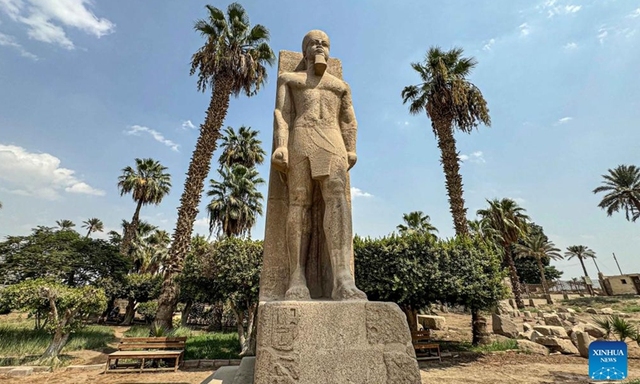
Today, the colossal statue of Ramesses II is a key artifact for both historians and archaeologists. The statue offers invaluable insights into the artistic techniques, religious beliefs, and political ideology of ancient Egypt. Its ongoing preservation and display in the Grand Egyptian Museum will ensure that future generations can continue to learn from and appreciate its historical significance.
In addition to its cultural and historical importance, the statue also plays a role in the field of Egyptology, providing scholars with a deeper understanding of the materials and techniques used by ancient Egyptian artisans. The ongoing research and restoration efforts surrounding the statue will help further unravel the mysteries of ancient Egypt and its remarkable achievements.
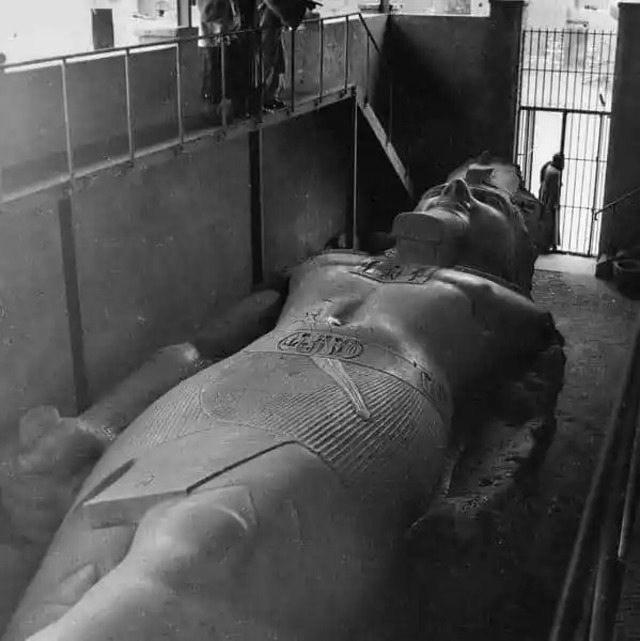
Conclusion: The Enduring Majesty of Ramesses II
The colossal statue of Ramesses II is much more than a work of art; it is a monumental symbol of the pharaoh’s power, influence, and divine connection. From its discovery in 1820 to its current location at the Grand Egyptian Museum, the statue has stood the test of time, offering a glimpse into one of Egypt’s most prosperous periods. As we continue to study and preserve this ancient artifact, it serves as a reminder of the enduring legacy of Ramesses II and the grandeur of ancient Egyptian civilization.
Whether viewed for its artistic beauty, its historical significance, or its cultural symbolism, the colossal statue of Ramesses II remains a powerful representation of Egypt’s past and a testament to the lasting impact of one of the country’s greatest rulers.
Video
Watch the video on the colossal statue of Ramesses the Great in Memphis – it’s a breathtaking look at ancient Egypt!
